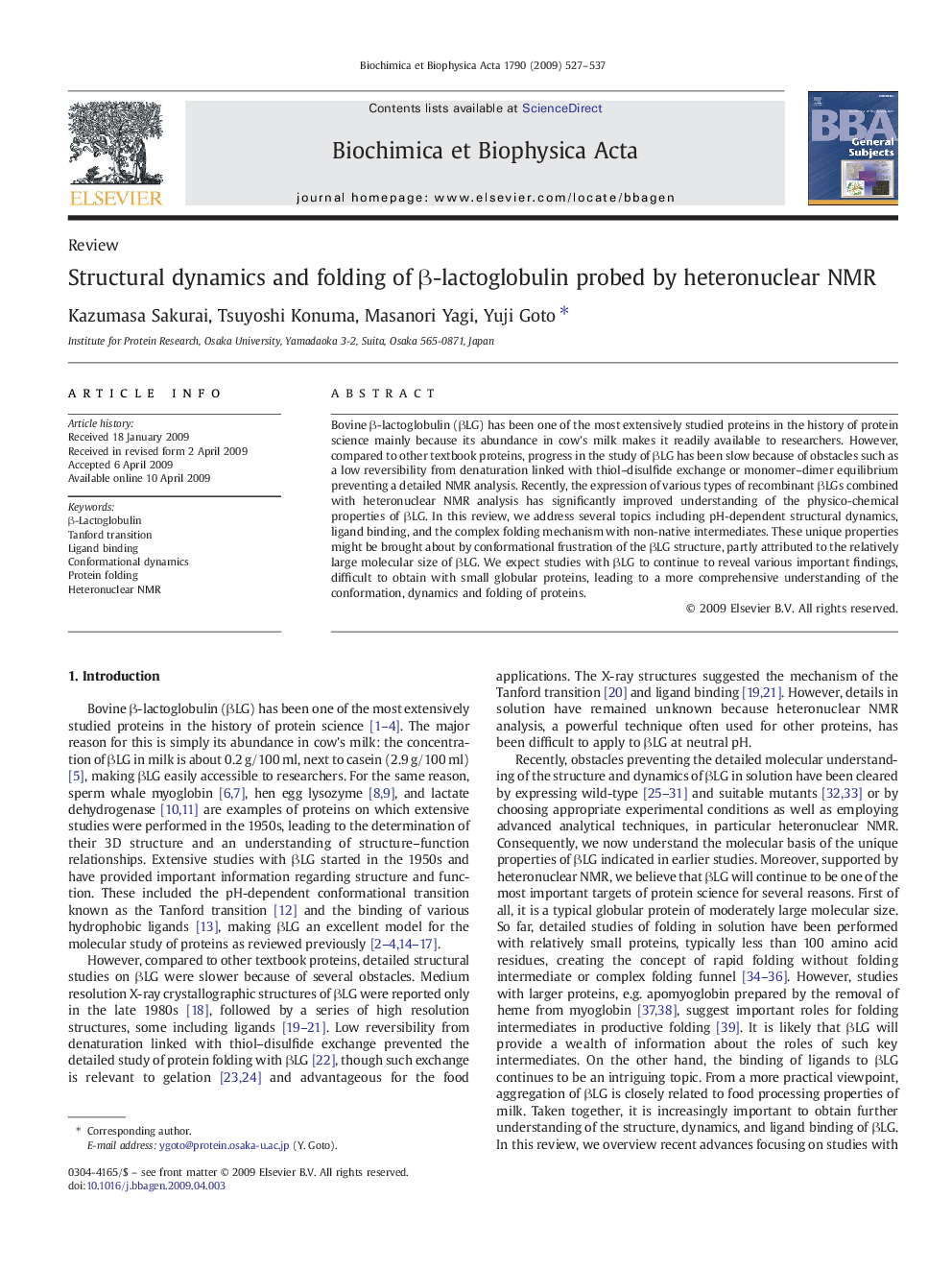| Article ID | Journal | Published Year | Pages | File Type |
|---|---|---|---|---|
| 10800933 | Biochimica et Biophysica Acta (BBA) - General Subjects | 2009 | 11 Pages |
Abstract
Bovine β-lactoglobulin (βLG) has been one of the most extensively studied proteins in the history of protein science mainly because its abundance in cow's milk makes it readily available to researchers. However, compared to other textbook proteins, progress in the study of βLG has been slow because of obstacles such as a low reversibility from denaturation linked with thiol-disulfide exchange or monomer-dimer equilibrium preventing a detailed NMR analysis. Recently, the expression of various types of recombinant βLGs combined with heteronuclear NMR analysis has significantly improved understanding of the physico-chemical properties of βLG. In this review, we address several topics including pH-dependent structural dynamics, ligand binding, and the complex folding mechanism with non-native intermediates. These unique properties might be brought about by conformational frustration of the βLG structure, partly attributed to the relatively large molecular size of βLG. We expect studies with βLG to continue to reveal various important findings, difficult to obtain with small globular proteins, leading to a more comprehensive understanding of the conformation, dynamics and folding of proteins.
Related Topics
Life Sciences
Biochemistry, Genetics and Molecular Biology
Biochemistry
Authors
Kazumasa Sakurai, Tsuyoshi Konuma, Masanori Yagi, Yuji Goto,
